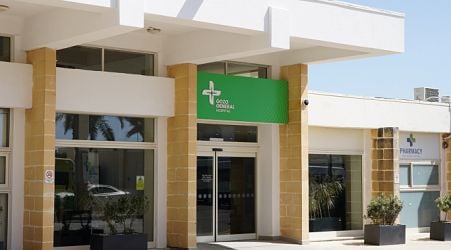Church and independent schools outperform state schools in computer literacy
Females perform better than males • Malta’s computer literacy score is within international average for computer literacy and substantially below average in computational thinking

Malta scores substantially below the international average in computational thinking skills and a notch lower in computer literacy, an international study reveals.
But the study also confirms the sharp divide in educational outcomes between students in private and church schools, whose performance sometimes surpasses the international mean, and those in state schools who lag behind.
The international Computer and Information Literacy Study (ICILS) study assesses students on computer literacy and computational thinking.
Students attending church schools achieved a mean computer literacy score of 503 and those in independent schools scored 508, a result which surpasses the international average of 476. Students attending state schools scored 436.5, well below the international average.
Males attending state schools fare even worse, achieving a poor score of 418 points.
Females attending state schools fared better than males in the same cohort scoring 453.But the best achievers in computer literacy were females attending church schools with a score of 524.
In terms of computational thinking students from independent schools scored 483, equivalent to the international average. In contrast, the mean CT scores of students attending church schools (473) and state schools (386) were significantly lower. In this respect the highest score was registered by females in independent schools (484) compared with boys in state schools, who registered the worst result (390.5).
The assessing computer and information literacy (CIL) was carried out in 34 countries, while the study on computational thinking (CT) was done in 23 countries. In Malta, the study covered 3,115 students hailing from 42 different secondary schools.
Malta fares worst in computational thinking
Overall, Malta ranked 21 out of the 34 countries surveyed, scoring 475 points in the CIL scale, just a notch down from the international average of 476 and well below the top score registered by the Republic of Korea (540) and the Czechia (525).
Malta ranked 18 out of 23 countries in terms of computational thinking (CT) with a score of 438 which was far lower than the international average of 483, well below the two front runners, Taiwan (548) and the Republic of Korea (537). But Malta was also well below the score of other EU countries like Czechia (527) and Belgium (509).
The study shows that just over half of Maltese students are operating below level 2 in terms of CIL proficiency, the level at which students demonstrate an understanding of computer use basics. This corresponds to the average percentage of students operating below this level (51%). In contrast in Korea only 28% are operating below this level.
Moreover, 38% of Maltese students (compared to an international mean of 34%) are operating below level 2 in CT proficiency which means that they can logically sequence only a very small variety of commands.
Computer literacy
In Malta 25% of students (compared to an international average of 24%,) were working below CIL Level 1, which means they can execute only the most basic and simple commands under explicit instruction. 26% (compared to an international average of 27%) were working at CIL Level 1, and can use computers to perform routine research and communication tasks under instruction. 31% (compared to an international average of 34%) were working at CIL Level 2, and can use computers with support to complete basic and explicit information gathering and information management tasks.
Only 15% (compared to 14% internationally) were working at Level 3, and demonstrated the capacity to work independently when using computers as information gathering and management tools. Furthermore, 2% (compared to 1% internationally) were working at Level 4, and can execute control and evaluative judgement when searching for information and creating information products.
Computational thinking
Student CT achievement was described across four levels of increasing sophistication. In Malta 21% (compared to an international average of 10%) of students were working below CT Level 1, which means they can only execute the most basic commands under instruction. A further 27% (compared to an international average of 24%) were working at CT Level 1, and can solve problems in which there is a generally small and functionally independent set of steps. They can logically sequence a small variety of commands, understand, and apply loops for repetitive actions, and ensure conditions are met to direct programme flow.
32% of Maltese students (compared to 37% internationally) were working at CT Level 2, and can recognise and apply various combinations within limited groups of commands and concepts, including sequencing, conditional logic, and loops, to formulate and solve problems.
Only 17% (compared to 23% internationally) were working at Level 3, and can engage with problems that include a variety of computational concepts such as simulation, conditional logic, and data interpretation and can make independent efforts to develop solutions with efficient code. Only 4% (compared to 6% internationally) were working at Level 4, and can recognise and analyse problems that involve a broad variety of computational concepts and commands.
Mixed but promising results
A national report issued by the Ministry for Education described the results in the ICILS study as “mixed but promising” noting that while in terms of computer and information literacy, Maltese students performed close to the international average, in terms of computational thinking Maltese students’ scores were notably lower than the ICILS average.
“These results underscore an opportunity for targeted improvements in computational thinking curricula, particularly to support the development of problem-solving and programming skills that are fundamental in the digital age,” director general Jude Zammit said in a forward to the national report.
On a more positive note, Malta’s mean score for availability of technology infrastructure resources at school, (52.7) was significantly larger than the ICILS 2023 average (50).


































